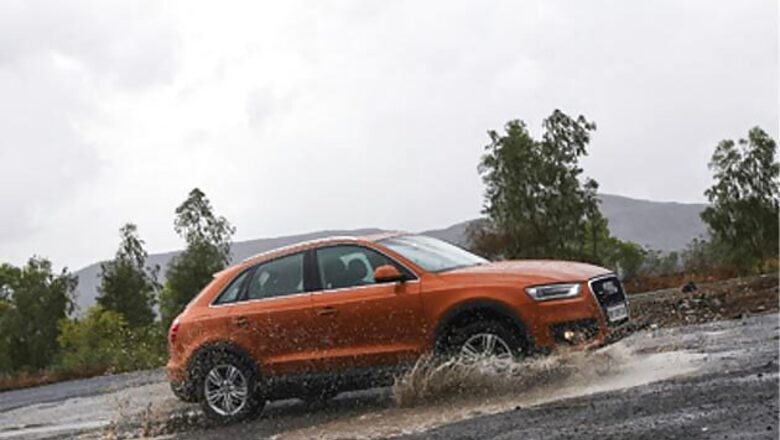
views
Rains bring water to the parched earth turning nature green and wonderful, banishing the heat of summer and filling our rivers with water to last the year. While at the same time our roads turn to a mucky, slippery, smelly death trap.
Both consequences are inevitable and while experiencing the boon is exquisite, living with the bane is possible with preparation and practice. Whether it's two or four wheels that ferry you about, we have a list of tips to get you through the wet without too much hassle.
The best way to go about it is to see how the monsoon affects your driving that makes difficult and uncomfortable, what is, a daily task for most of us. The three things that get primarily affected are your vision, the vehicle's grip and your ability to control the vehicle. While your ability to control the vehicle and the grip available is interrelated there are other factors that go into controlling your vehicle.
Vision is the most crucial and easiest to tackle and requires no modification to the vehicle. Always ensure that your windscreen is clean and dry on the inside and once this is done you don't touch it till you are cleaning it again at the start of your next drive.
If it does start to fog use the defogger and aircon to clear this up. Avoid wiping this from the inside while on the move as in addition to being distracting and dangerous I also find that the misting happens more frequently and unevenly after this is done.
Most modern cars with climate control will turn on the AC when the defogger is selected. This also means that you need to ensure that your blower and aircon are working properly. Also keep your windshield washer reservoir full. You can add some liquid soap or a branded additive to improve the cleaning.
Also understand that if your vision is compromised so is that of the other people on the road. Driving with day time running lights is the best way to ensure that others can see you during the day and at night try not to use the high beam in heavy rain as the light tends to reflect off the rain and obscure your vision further. Only use hazard lights when in trouble. This takes care of your vision and also ensures that you are visible to those around you.
Now let's move on to your grip. The reason your car moves forward, stays in a straight line, turns when you want it to and stops is because the tyres grip the road. Wet roads reduce this friction to a considerable extent and hence your ability to accelerate, turn and stop changes.
To ensure that this degradation of performance is at its minimum check that your tyres have sufficient tread depth and are inflated to the correct manufacture specified pressure. Also have your braking system thoroughly checked.
Staying in control of your car would mean that you would need to make a change in the way you drive. You will need more space to come to a stop and turns need to be taken at slower speeds to successfully navigate through them.
Getting on the gas smoothly and braking with gentle progressive pressure will ensure that you accelerate safely and come to a stop pointed in the right direction. Try using your brakes on deserted or open stretches of road to see how much grip you have.
This 'practice braking' will help you gauge the amount of grip you have. Most of the time you do have more grip than you think you do, except when the first rains fall. In the first showers the rain mixes with the mud, oil and muck on the roads making them really slippery but once this washes away the grip does get better.
Also stay away from standing water as far as possible. Driving through this at speed can cause the car to aquaplane - when water gets trapped between your tyres and the road surface taking away all grip from the tyres.
The only way to recover control is to get off the accelerator and the brake and wait for the car to regain grip. Once you feel the tyres regaining traction then gently apply the brakes. The easiest way to avoid this is to creep through standing water. Yes, sometimes caution is the better part of valour.
If your car is equipped with anti lock braking system (ABS), electronic stability program (ESP) and traction control make sure that none of the systems are reporting warnings on the dash.
Make sure all your lights (including hazard and turn indicators) are functioning and keep them clean. Also have the body/frame/chassis of your car checked for any chips in the paint/protective coatings as these will corrode faster in the rains. Having these painted, or at the very least touched up, is a must to avoid rust setting in.
While this is can be a tiresome time for commuting it does not always have to be so. If you take the right precautions and prepare in advance, you and your vehicle will safely make it through the season unscathed.
There are rewards to be reaped for being adventurous too. The country tends to be beautiful this time of the year so go out and explore, you will be surprised with how much fun driving can be in the rains. I’m sure going to be heading for the hills once the first showers are through.













Comments
0 comment